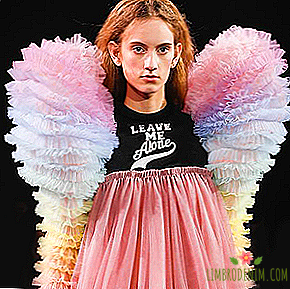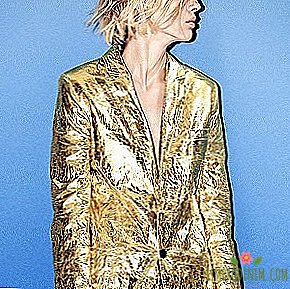Pale and beautiful: Why half the world goes crazy over white skin
Indian market whitening creams - one of the largest industries in the local economy. It is estimated at 400 million dollars, and sales of such cosmetics in some years exceeded even the popularity of Coca-Cola. In addition to India, bleaching products are breaking records in China, South Korea, Singapore, Pakistan and even Nigeria.
In Hong Kong, Malaysia, South Korea, the Philippines, and Taiwan, 40% of women use whitening creams, marketing company Synovate has calculated. According to one study, such cosmetics are also popular with young men: in India, it is used by 17% of respondents, in the Philippines - 25%, and in Thailand - as much as 69%. Whitening products like in Africa. For example, in Lagos, the capital of Nigeria, they are used by 72% of women, and in Senegal, about 67%.
Advertising brochures in Asian and some Eastern countries do not hesitate to offer people to become more beautiful, getting white skin. Interestingly, not only local cosmetics companies thrive on this strange trend, but also Western giants, for example, Unilever, which owns the Dove brand, known for inconsistent body-positive advertising campaigns, or L'Oréal, which calmly launched a line of bleaching creams for an Asian audience.
Fair & Lovely - this is the name of the Unilever cosmetics line, perhaps the most popular bleaching line in the world. This product is usually depicted a woman of Indian origin with unnaturally fair skin. Fair & Lovely is not just a brand, but a system of views on appearance, according to which the degree of attractiveness of women and men is determined by the tone of their skin - the brighter the better. For this there is even a special term - colorism.
And while in Western countries they are dealing with love for tanning beds and telling sun lovers that sun abuse increases the risk of developing skin cancer, in Asia and some regions of Africa large corporations and aggressive advertising campaigns support toxic stereotypes about beauty and nobility of appearance that have been formed for several centuries. backwards
Industrialization and caste system
The first thought that comes to mind about Eastern obsession with white skin: these people want to be like Europeans. In fact, the history of each culture is individual and often has almost no connection with globalization and the idea of “white supremacy” - some simply did not survive colonization. And yet the peoples who survived it, really strengthened the stereotypes that already existed regarding skin color. This happened, for example, in India, Pakistan and the Philippines, whose history is closely connected with the struggle against colonial empires and the defense of cultural identity. "The British are often praised for creating Pakistanis as a nation and building a complex system of railways in our area, but at the same time they weaned off being proud of their skin," said Maria Sartaj, columnist for Daily Times Pakistan.
For a long time tan was associated with hard work in the field, and pallor distinguished aristocrats who did not go outside without much need. In India, this stereotype was aggravated by a harsh caste division, which supposedly reflected the difference in skin tones, although it is obvious that in most cases it was about the difference between working in the field and indoors.
This stereotype turned out to be even more tenacious in eastern countries because of the proportion of people who work in the agricultural sector. For example, in China, in 2015, 28.3% of the population was engaged in agriculture, while in the US this figure was only 1.6%. Many countries have entered the era of forced industrialization an order of magnitude later than the Western world, and, accordingly, slowly get rid of stereotypes that have arisen in the era of the agrarian economy. If in the United States a tan indicates more likely that an office worker has enough money to go on vacation in Miami or have a good time outside the city, in China or India it can still be associated with village origins and hard manual labor.
But the peculiarities of economic development are not the only reason for the obsession about pallor. After all, how then to explain the fashion for white skin in South Korea, Japan or Singapore - the utopian strongholds of the post-industrial era? Recall, at least an absurd situation, when Nylon Singapore magazine published on the cover a photograph of the singer and activist M.I.A. Tamil origin, which often speaks of racial inequality, visibly brightens her skin tone.
As for Japan, the love of white skin flourished here for centuries. White powder and natural remedies used to make skin lighter were very popular, especially geisha. The lighter and softer the skin on the back of the neck was, the more beautiful the woman was considered. There is even a saying in the country: "White skin covers seven flaws."
Some traditions quite successfully migrated to modern culture and turned out to be part of new standards. For example, in South Korea, white skin has become an inherent feature of the ideal pop star. Pallor is an attribute of both the actresses of popular TV shows and the sweet voices of the boybands. Many young people tend to be like their idols in everything and simultaneously with the purchase of whitening creams all en masse are recorded on blepharoplasty.
It is believed that the love of white skin due to certain views on aging. According to Dr. Alan Khayat, a specialist in cosmetology, in some Eastern cultures, pigmentation is considered to be the primary sign of aging. While Europeans often find freckles charming, Asians may perceive them as a sign of the approaching wilting.
Marriage and discrimination
Of course, the ratings of sales of bleaching agents testify not only to fashion trends, but also to the discrimination existing in societies obsessed with white skin. Now not only the face, but even the sexual organs are trying to bleach. So, in Thailand, sold a tool that promises to lighten the vagina in four weeks. And men and women are looking for the most advanced means that will allow you to become closer to the ideal.
White skin remains such an important criterion of attractiveness in India that parents, when placing ads about finding a bride for their son, mention: a girl must be a pale face. “It’s like a market where everyone wants to buy delicious red tomatoes, just like getting the palest daughter-in-law,” said Kavita Emmanuel, co-founder of the Women of Worth organization (“Women's Dignity”) and the “Dark is Beautiful” campaign. means beautiful "). Women tend to whiten their skin to please men and become part of a new family, but this stereotype works in the opposite direction. According to 2012 data, 71% of women preferred fair-skinned men when they were looking for a potential husband at one of the thematic sites. In turn, 65-70% of men on the same site indicated that they have fair skin.
Dark skin in this country can interfere with employment. So, once India launched a state program, thanks to which one hundred girls from disadvantaged areas studied for flight attendants, but most of them did not get a job in the airlines because of their skin color. Only eight of them were able to start a career, and only as a staff that does not participate in the flights.
Light skin is associated with prosperity, success and exclusivity. This image is supported by Korean dramas and Bollywood actors who are actively filming whitening cosmetics commercials with the obvious message: to be successful, you have to turn white. On the Internet, you can find a lot of pictures of Bollywood actresses, in which it is noticeable that the girls have visibly bleached the skin, and those who do not dare to seriously interfere with their appearance are helped by make-up artists.
It is not surprising that many girls in India are forced to whiten their skin since childhood. “When I was a teenager, my grandmother made me swim in a special mixture of chickpea flour - it was thought that this made the skin whiter. I was also punished if I spent too much time in the sun. Having moved to another country, I was surprised to learn that my skin color is fine, "says Malati in an interview with The Guardian.
Mercury and illegal market
Fixing the skin tone does not only harm self-esteem, personal life and career, but is also quite capable of crippling. Women who cannot afford creams or expensive procedures use folk remedies such as lemon juice, rose water, honey, egg yolk, cream or cumin. Some women in India specially eat saffron during pregnancy - it is believed that it helps to make the baby's skin color lighter.
Whitening cosmetics contains different ingredients. Somewhere there are acids that promote skin renewal, others reduce melanin production - usually those creams that contain mulberry tree extract, licorice extract, kojic acid, arbutin, mercury and hydroquinone. The latter is used both for exfoliation and for the development of photographs and often causes redness, itching and even strong pigmentation, which can later not be completely eliminated. Mercury and hydroquinone are banned for use in the European Union, but in many countries remain quite legal ingredients, although they can increase the risk of cancer because of their toxicity.
In Thailand, there is a list of 70 illegal whitening creams; in Indonesia, 50 potentially harmful substances have also been banned. However, the black market miracle creams continues to receive huge profits, especially in developing countries. For example, Nigeria, where about 77% of women use whitening creams, and the level of state control over the quality of cosmetics remains very low.
Dark means beautiful
Fortunately, in recent years, the situation has begun to change for the better. Local activists are trying to inspire girls and boys to be proud of their skin color. For example, in India in 2009 they launched the program "Dark is Beautiful", which was joined by some celebrities. Bollywood actress Nandita Das supported the activists and began to distribute leaflets with the slogan "Be black, be beautiful" ("Stay dark, stay beautiful"). In addition, the activists of "Dark is Beautiful" launched a petition demanding to remove the advertising cream for men "Light-skinned and beautiful" company Emami. Director Shekhar Kapur also spoke out against discriminatory advertising by launching the discussion on Twitter under the hashtag #adswedontbuy (“advertising that we don’t buy”).
Perhaps the most ridiculous action gave Bollywood actor Abhay Deol. "We are not racists, now I will prove it to you!" - he wrote on his Facebook page. Deol began to spread ads of bleaching agents with the stars of Indian cinema and supply it with absurd comments, convincing that in fact the products are designed to make the skin darker, not lighter, as it is written on the package.
Even young youtube stars are against discrimination. For example, Indian poetess Aranya Johar laid out a “Beauty Guide for a Dark-skinned Girl,” in which she tells what problems she and her acquaintances faced because of colorism. And beauty bloggers of Indian origin are moving from words to action, offering to make make-up without clarification.
Photo: Moonshot Cosmetic, Wikipedia, The Colored Girl, Giorgio Armani Beauty








